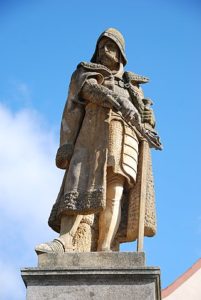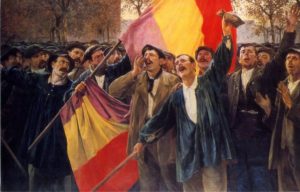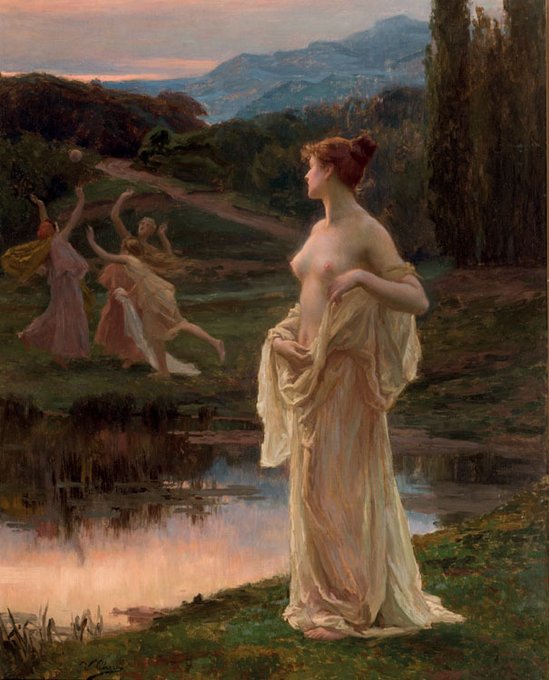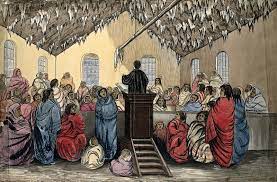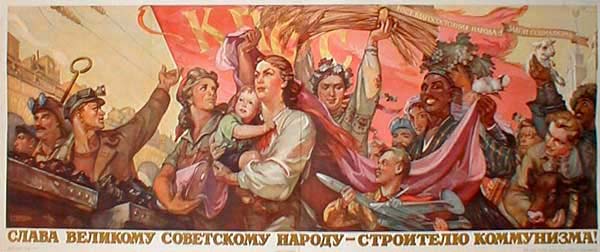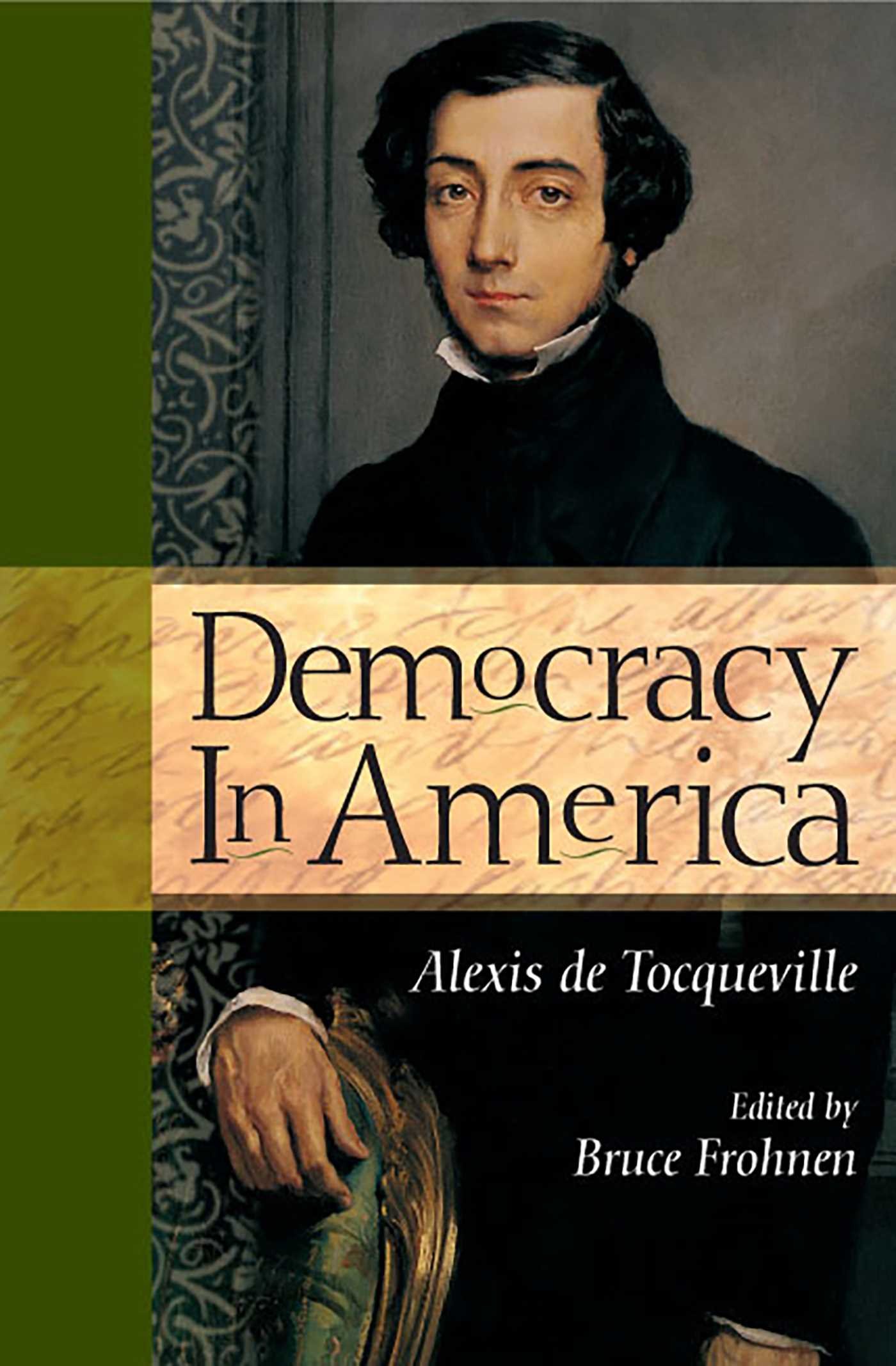It is the bloodshed that accompanied the seizure of power by these ideological movements that gives the illusion. We readily imagine that killing is synonymous with revolution and that the more a change is historically linked to massacres, the more profound it is in itself. We also imagine that it is all the more radical the more visibly it affects the political order. But this is not the case. One of the most real and lasting changes in known history, the transition of multitudes of Hindus of all castes from Brahmanism to Buddhism between the 3rd and 1st centuries BC, took place not only without bloodshed, without revolution in the popular sense of the word, but without the least political upheaval. Nevertheless, Buddhism, even though it was later practically eliminated from India, has left its mark on the country forever.[1]
Marxism-Leninism is, despite the persecutions, the battles, the mass executions, the tortures, the slow deaths in the concentration camps and the political overthrows which have everywhere accompanied its victory, far too much ‘in line’ with the evolution of the West—and of the world, increasingly dominated by Western technology, to deserve the name of ‘revolutionary doctrine’.
Fundamentally, it represents the logical continuation, the inevitable continuation, of the system of ideas and values which underlies and sustains the world which arose both from the French Revolution and the increasing industrialisation of the 19th century; the seeds of this system were already found in the quasi-religious respect of the Jacobins for ‘science’ and its application to the ‘happiness’ of the greatest number of men, all ‘equal in rights’ and before that, the notion of ‘universal conscience’ linked to ‘reason’: the same for all, as it appears in Kant, Rousseau and Descartes.
It represents the logical continuation of that attitude which holds as legitimate any revolt against a traditional authority in the name of ‘reason’, ‘conscience’ and above all of the so-called ‘facts’ brought to light by ‘scientific’ research. It completes the series of all these stages of human thought, each of which constitutes a negation of the hierarchical diversity of beings, including men: an abandonment of the primitive humility of the sage, before the eternal wisdom; a break with the spirit of all traditions of more than human origin. It represents, at the stage we have reached, the natural culmination of a whole evolution which merges with the very unfolding of our cycle: unfolding which accelerates, as it approaches its end, according to the immutable law of all cycles.
It has certainly not ‘revolutionised’ anything. It has only fulfilled the possibilities of expressing the permanent tendency of the cycle, as the increasingly rapid expansion of technology coincides with the pervasive increase in the population of the globe. In short, it is ‘in line’ with the cycle, especially the latter part of it.
Christianity was, of course, at least as dramatic a change for the Ancient World as victorious Communism is for today’s world. But it had an esoteric side that linked it, despite everything, to Tradition from which it derived its justification as a religion. It was its exoteric aspect that made it, in the hands of the powerful who encouraged or imposed it, first of all in the hands of Constantine, the instrument of domination assured by a more or less rapid lowering of the racial elites; by a political unification from below.[2]
 It is this same exoteric aspect, in particular the enormous importance it gave to all ‘human souls’, that compels Adolf Hitler to see in Christianity the ‘prefiguration of Bolshevism’: the ‘mobilisation, by the Jew, of the mass of slaves to undermine society’, the egalitarian and anthropocentric doctrine, anti-racist to the highest degree, capable of winning over the countless uprooted of Rome and the Romanised Near East. It is this doctrine that Hitler attacks in all his criticisms of the Christian religion, in particular in the comparison he constantly makes between the Jew Saul of Tarsus, the St. Paul of the Churches, and the Jew Mardoccai, alias Karl Marx.
It is this same exoteric aspect, in particular the enormous importance it gave to all ‘human souls’, that compels Adolf Hitler to see in Christianity the ‘prefiguration of Bolshevism’: the ‘mobilisation, by the Jew, of the mass of slaves to undermine society’, the egalitarian and anthropocentric doctrine, anti-racist to the highest degree, capable of winning over the countless uprooted of Rome and the Romanised Near East. It is this doctrine that Hitler attacks in all his criticisms of the Christian religion, in particular in the comparison he constantly makes between the Jew Saul of Tarsus, the St. Paul of the Churches, and the Jew Mardoccai, alias Karl Marx.
But it could be said that Christian anthropocentrism, separated of course from its theological basis, already existed in the thought of the Hellenistic and then the Roman world; that it even represented, more and more, the common denominator of the ‘intellectuals’ as well as the plebs of these worlds. I even wonder if we do not see it taking shape from further back, because in the 6th century BC Thales of Miletus thanked, it is said, the Gods for having created him ‘to be human, and not animal; male, not female; Hellene, not Barbarian’ meaning a foreigner.
It is more than likely that, already in Alexandrian times, a sage would have rejected the last two, especially the last one!, of these three reasons to give thanks to Heaven. But he would have retained the first. And it is doubtful that he would have justified it with as much simple common sense as Thales.
______ 卐 ______
Editor’s Note: Here I agree with Thales. But keep in mind that if Thales had not been an Aryan, I’d agree with Savitri. The point is that only the most beautiful specimens of the Aryan race are the image and likeness of divinity. The rest are, using the language of the priest of the 14 words, exterminable Neanderthals.
______ 卐 ______
Now any exaltation of ‘man’ considered in himself, and not as a level to be surpassed, automatically leads to the over-estimation of both the masses and individuals with interesting hands; to a morbid concern for their ‘happiness’ at any cost; therefore, to an utilitarian attitude above all in the face of knowledge as well as of creative action.
In other words, if, on the one hand, in the Hellenistic world—then in the Roman world—esoteric doctrines more or less related to Tradition—that is, doctrines ‘above Time’—have flourished within certain schools of ancient wisdom—among the Neo-Platonists, the Neo-Pythagoreans and certain Christians—it is, on the other hand, quite certain that all that conquering Christianity (exoteric, and to what degree!) was, as was the widespread interest in the applications of experimental science, in the direction of the Cycle.
The fact that the Churches have, later on in the centuries opposed the statement of several scientific truths, ‘contrary to dogma’ or supposedly so, doesn’t change anything. This is, in fact, a pure rivalry between powers aiming at the ‘happiness of man’—in the other world or this one—and embarrassing each other as two suppliers of similar commodities.
If the Churches today are giving more and more ground, if they are all (including the Roman Church) more tolerant of those of their members who like Teilhard de Chardin give ‘science’ the largest share, it is because they know that people are more and more interested in the visible world and the benefits that flow from its knowledge, and less and less to what cannot be seen or ‘proved’—and they do what they can to keep their flock. They ‘go with the flow’ while pointing out as often as possible that the anthropocentric ‘values’ of the atheists are, in fact, their own; that they even owe them, without realising it.
No doctrine, no faith linked to these values is ‘revolutionary’ whatever the arguments on which it is based, whether drawn from a ‘revealed’ morality or from an economic ‘science’.
The real revolutionaries are those who militate not against the institutions of one day, in the name of the ‘sense of history’, but against the sense of history in the name of timeless Truth; against this race to decadence characteristic of every cycle approaching its end, in the name of their nostalgia for the beauty of all great beginnings, of all the beginnings of cycles.
These are precisely those who take the opposite view of the so-called ‘values’ in which the inevitable decadence inherent in every manifestation in Time has gradually asserted itself and continues to assert itself. They are, in our time, the followers of the one I have called ‘the Man against Time’, Adolf Hitler. They are, in the past, all those who, like him, have fought against the tide, the growing thrust of the Forces of the Abyss, and prepared his work from far and near—his work and that of the divine Destroyer, immensely harder, more implacable, further from man than he, whom the faithful of all forms of Tradition await under various names ‘at the end of the centuries’.
__________
[1] The same could be said of Jainism, which still has one or two million followers there.
[2] Racial purity no longer played any role under Constantine. And even in the Germanic but Christian empire of Charlemagne much later, a Christian Gallo-Roman had more consideration than a Saxon or other pagan German.

